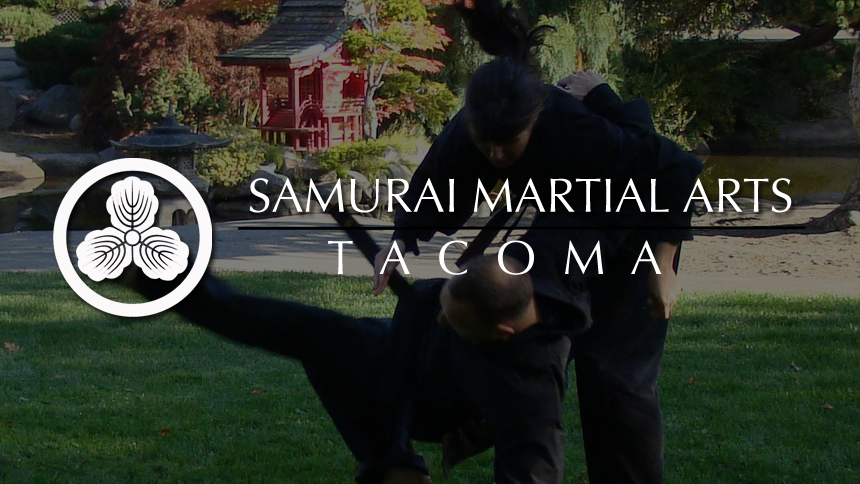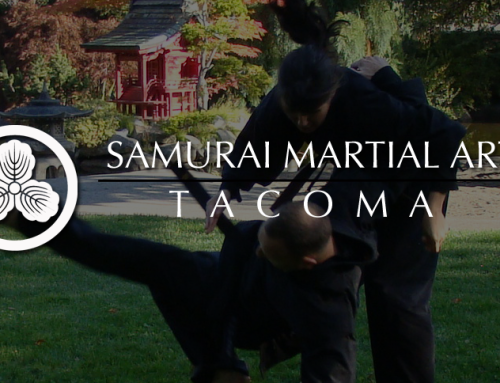Verbal Skills for Self Defense
At this point you may still be able to diffuse the situation verbally for self defense. On the street there is no magic formula to follow. The conversation will be very short. The most important aspects to remember are that your body language has to reflect what you are saying, anger breeds anger, and do not challenge their ego. If your body language is threatening then you are forcing the predator to defend his ego and not back down. Ensure your hands are open with palms toward the assailant held in a natural manner and not looking like you are ready for a fight. You do not have to wimp out or apologize but you need to leave the predator with a way out that allows him to save face to some degree. One way to achieve this is to make it seem there has been a misunderstanding, this allows them to make a strong statement and walk away or back off. With an aggressive predator this phase may only be one statement or may not occur at all. Only about three percent of the population are sociopaths, meaning they are unaffected by social norms. This means there is potential to verbally de-escalate a situation with about 97 percent of the people out there. However, keep in mind that the sociopaths are more likely to have initiated a situation like this to begin with.
We have already established that in the case of predators who are intent on violent crime an interview takes place to determine victims, and that sometimes these interviews involve conversation. However, there is another type of assailant you may encounter whose motive is purely ego based. Alcohol, drugs, showing off in front of friends, etc… may instigate this behavior. However, the conversation takes place because they are not yet ready to fight, they engage in an argument in order to hype themselves up for the fight. If you escalate the argument you will give them a reason to justify their assault and the courage to carry it out.
Dealing with these types of aggressors, co-workers, or friends and family is different then the predator intent on rape or murder. These situations offer a greater chance to verbally diffuse the situation. In Verbal Judo, the author offers a five-step approach to dealing with these people. The first step is to ask for their compliance, “Please don’t do that.” The second is to make a reasonable appeal by setting the context, “When you do that I feel uncomfortable.” The third is to make a personal appeal by presenting options, “You can stop acting that way and we can still be friends, or you can keep bugging me and I’ll have to report you, you’ll be transferred to another office, and we can never be friends again.” The forth step is to make a practical appeal by confirming their choice, “Is there anything I can do or say to get you to stop blocking me in the break room, and making me feel threatened? I sure hope there is.” Finally, the fifth step is to act and the person should know that whatever the consequences are, it is their fault.[ii]
If the predator closes to within about 18 inches and you feel an attack is emanate you need to strike first. Once a situation escalates to physical defense you may then have to deal with the legal ramifications of your actions. Immediately after the situation you will still be feeling the effects of the adrenal state and will still be emotionally charged from the situation. This is probably not the best time to give a statement to the police or really be able to accurately relay the events to anyone. Therefore if law enforcement personnel arrive on scene you may want to state “he tried to kill me, I want him arrested, I want to talk to a lawyer.”[iii] However, by establishing and practicing clear criteria in advance you are in a better position to explain “…I did this, because he did that…” and having set this criteria in advance you are less likely to overstep your legal boundaries.
Predator Motivation
Predators want to violate your body, take your possessions, or end your life. If they want your life there is something about the present situation that is preventing them from acting. This is why you should never move to another location with the predator. By using nonaggressive postures, gestures, and speech you lower, or at least do not escalate, the attackers feeling of control. This gives you a chance to verbally de-escalate the situation or allows you a better chance to gain physical control or escape.
When you attack it needs to be decisive, there will not be a second chance. Also understand predators do not want attention, injury, or arrest. By resisting you increase their risk of all three.[iv]
You can never assume that just offering resistance will spook them and cause them to run away. You have to be committed to doing whatever the situation requires to ensure your survival. The only assumptions you can ever make is that they have a hidden weapon, and that they are not alone.[v] But also, do not assume they are all powerful, do not imagine them to have abilities they have yet to prove. It can be too overwhelming to you if you feel you are up against the greatest criminal in history.[vi]
Ultimately the criminal probably only has a few things that have worked well for them in the past, and those are the techniques they stick to. Behavior is modified by three elements: the result, the degree of certainty in that result, and the time frame in which that result occurs. If a criminal tries a tactic that fails a couple of times the result was immediate consistent failure. That behavior will be abandoned to try something else. If the new tactic worked it will be repeated because the result was immediate consistent success. This is also why crime is still conducted despite the threat of jail. The choice becomes immediate gratification versus maybe getting caught, and maybe getting a jail sentence, and at some undefined time in the future.[vii] This provides one more reason why resisting an attack increases your chance of survival, because the consequence becomes an immediate undesirable situation for the predator.
Use of Weapons
When either party introduces a weapon the consequences for both parties escalate. Consider this if you choose to carry a weapon, and think about how this may affect the fight, and how it will look to authorities. Remember it is your responsibility to learn the laws affecting you and your weapon choice in the places you intend to carry the weapon.
However, by being thoroughly proficient in the use of edged, blunt, and projectile weapons you are better able to assess a threat and react accordingly. The broader your base of skills become, the more options you have to deal with an encounter without having to cause unintentional lasting harm to the attacker.
Train Wisely
Focus your training opportunities on the most often encountered threats. Most fights, especially those emotionally charged, initiate with some variation of a sucker punch or tackle. Most with criminal intent involve a weapon of intimidation such as a knife or gun. The more your training incorporates cognitive and emotional elements the more inoculated to stress you will become reducing your chances of being mentally overwhelmed on the street.
Legal Ramifications
Ultimately, if you are in a violent conflict there is a good chance that you will have to explain your actions to the authorities. If in that position you should seek the advice of qualified legal counsel. Additionally, you should be familiar with certain legal terms before you are in a position to defend yourself. The following example are excerpts from the Revised Code of Washington State as of September 2008.
Lawful Use of Force: RCW 9A.16.020(3) Whenever used by a party about to be injured, or by another lawfully aiding him or her, in preventing or attempting to prevent an offense against his or her person, or a malicious trespass, or other malicious interference with real or personal property lawfully in his or her possession, in case the force is not more than is necessary;
Definition of Necessary: RCW 9A.16.010(1) “Necessary” means that no reasonably effective alternative to the use of force appeared to exist and that the amount of force used was reasonable to effect the lawful purpose intended.
Assault in the First Degree: RCW 9A.36.011(1) A person is guilty of assault in the first degree if he or she, with intent to inflict great bodily harm:
(a) Assaults another with a firearm or any deadly weapon or by any force or means likely to produce great bodily harm or death; or
(c) Assaults another and inflicts great bodily harm.
Assault in the Second Degree: RCW 9A.36.021(1) A person is guilty of assault in the second degree if he or she, under circumstances not amounting to assault in the first degree:
(a) Intentionally assaults another and thereby recklessly inflicts substantial bodily harm; or
(c) Assaults another with a deadly weapon; or
(g) Assaults another by strangulation.
Defending Against Violent Crime Reimbursement: RCW 9A.16.110 (1) No person in the state shall be placed in legal jeopardy of any kind whatsoever for protecting by any reasonable means necessary, himself or herself, his or her family, or his or her real or personal property, or for coming to the aid of another who is in imminent danger of or the victim of assault, robbery, kidnapping, arson, burglary, rape, murder, or any other violent crime as defined in RCW 9.94A.030.
(2) When a person charged with a crime listed in subsection (1) of this section is found not guilty by reason of self-defense, the state of Washington shall reimburse the defendant for all reasonable costs, including loss of time, legal fees incurred, and other expenses involved in his or her defense. This reimbursement is not an independent cause of action. To award these reasonable costs the trier of fact must find that the defendant’s claim of self-defense was sustained by a preponderance of the evidence. If the trier of fact makes a determination of self-defense, the judge shall determine the amount of the award.
In this example of Washington State, the laws are in place to protect a person who is acting in self-defense. However, you need to act in a manner that is, and appears to witnesses and cameras, defensive. You will strengthen your case if you can state that you physically tried to avoid or escape from the person, that you tried to resolve the issue verbally, and you only acted when the threat was imminent (within 18 inches, and demonstrating hostile intent), and that you used no more force then was necessary to control the person. However, if what occurs is two people arguing and both escalating the situation you may find yourself charged with assault and not meeting the criteria for self-defense.
[i] Arcuri, Tom. (2008). Personal Defense Readiness Regional Seminar. Vancouver, British Columbia. [ii] Thompson, G., & Jenkins, J.B., (1993). Verbal Judo: The Gentle Art of Persuasion. New York: Quill William Morrow. [iii] Smith. Clint. (2005). Thunder Ranch Training Series: Defensive Handgun. DVD. [iv] Arcuri, Tom. (2008). Personal Defense Readiness Regional Seminar. Vancouver, British Columbia [v] Dimitri, Richard. (2004). Get R.E.A.L. Seminar Series. Senshido. DVD. [vi] Arcuri, Tom. (2008). Personal Defense Readiness Regional Seminar. Vancouver, British Columbia [vii] Krause, Thomas. (2004). Working Group on Organizational Behavior. Behavioral Science Technologies. Ojai, California.Taiso Fitness and Nutrition
If you are looking for a unique gym experience try Taiso Fitness and Nutrition. We are Tacoma’s fitness and nutrition gym for people who want to get out of pain or improve performance, who need immediate, measurable results, and want to make educated decisions to take control of their health.
Ready to get out of pain or improve performance? Looking for a gym, personal trainer, or unique boot camp experience? Set up a complimentary consultation, or start a 21 Day Risk Free Trial. Stay up to date on the latest information through our website at www.taisofitness.com


